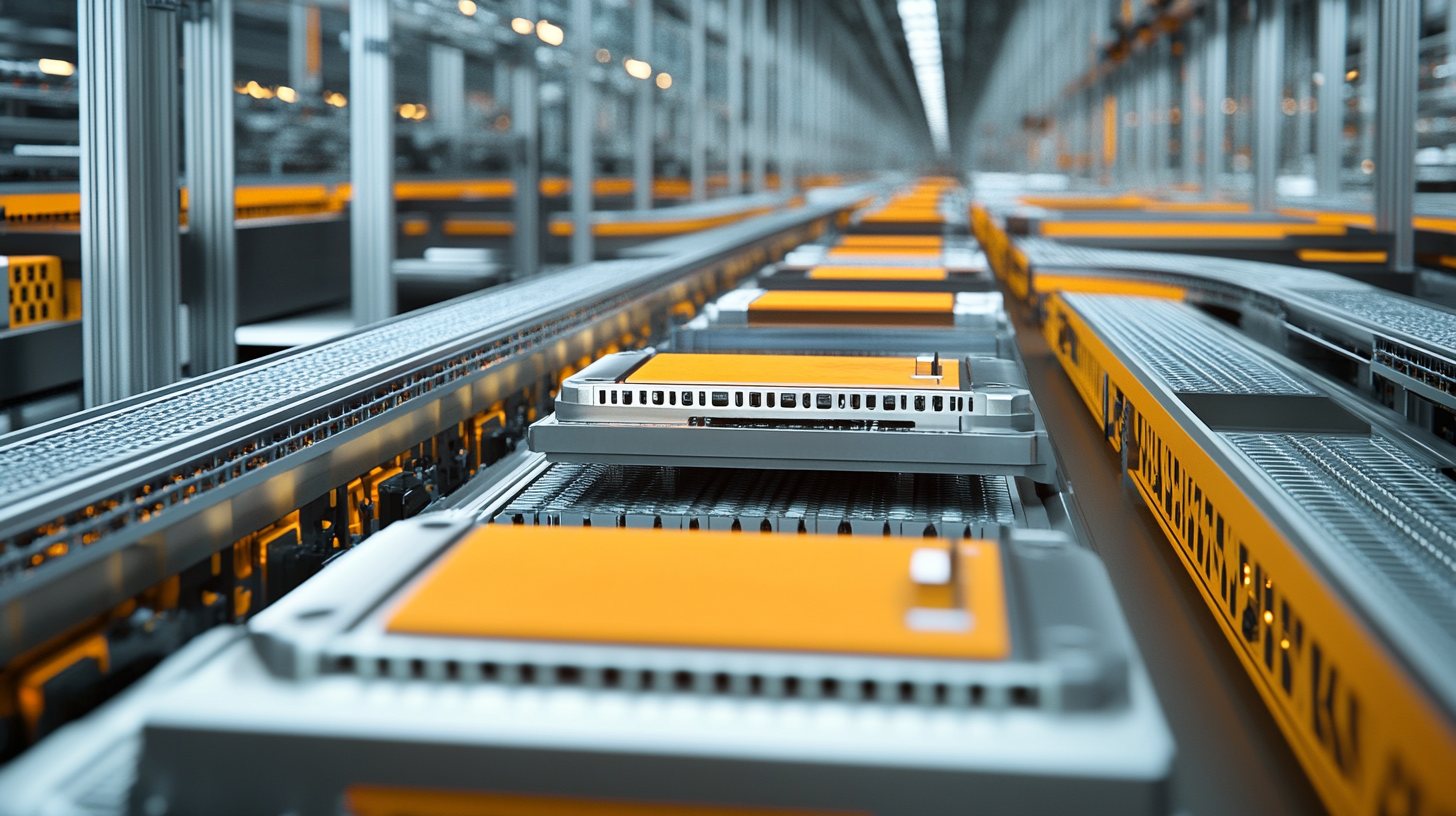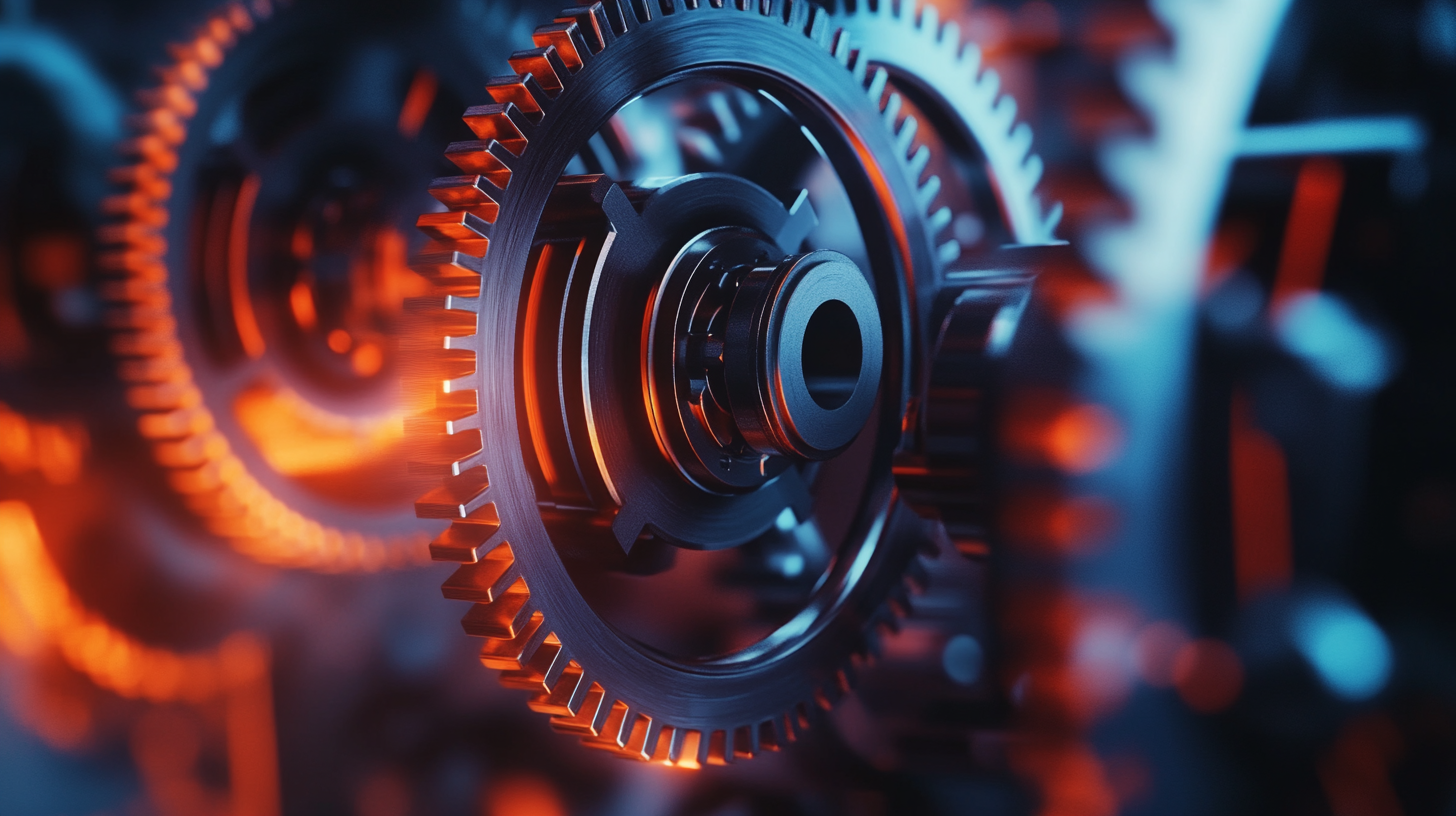Navigating the Evolution of Automation Equipment Bearing Solutions in Global Supply Chains
In today's fast-paced global supply chains, the evolution of Automation Equipment Bearing Solutions plays a pivotal role in enhancing operational efficiency and productivity. As industries continuously adapt to changing market demands, the integration of advanced bearing technologies has become essential for optimizing performance in automated systems. These solutions not only facilitate smoother machinery operations but also contribute to reducing downtime and maintenance costs, ultimately leading to increased competitiveness. This blog will explore the key developments and trends shaping the landscape of automation equipment bearing solutions, highlighting their significance in streamlining supply chain processes and driving innovation in various sectors. By understanding these advancements, businesses can better navigate the complexities of automation, ensuring their operations remain agile and resilient in a dynamic economic environment.

Understanding the Role of Automation Equipment in Modern Supply Chains
In today’s fast-paced global supply chains, automation equipment plays an essential role in enhancing efficiency and productivity. According to a 2023 report by the International Federation of Robotics, the adoption of industrial robots has surged by 15% over the past year, revolutionizing manufacturing processes across various sectors. These robots not only streamline production but also minimize human error, contributing to improved quality control. As supply chains become increasingly complex, companies are investing heavily in automation solutions to maintain competitiveness.
Furthermore, the integration of automation equipment is transforming logistics and distribution networks. A study published by McKinsey reveals that automation can reduce supply chain costs by up to 30%, allowing businesses to allocate resources more effectively. Technologies such as automated guided vehicles (AGVs) and AI-powered sorting systems enhance operational speed and accuracy, ensuring timely delivery of goods. This shift towards automation is not merely a trend; it is a strategic necessity for businesses aiming to thrive in the modern marketplace, where consumer demands and market dynamics are ever-changing.
Navigating the Evolution of Automation Equipment Bearing Solutions in Global Supply Chains
This pie chart illustrates the distribution of various automation equipment types utilized within global supply chains. Robotics leads the segment, indicating a strong reliance on automated technologies to enhance operational efficiency and productivity.
The Impact of Bearing Solutions on Efficiency and Reliability in Automation
The efficiency and reliability of automation in global supply chains hinge significantly on advanced bearing solutions. As automation continues to evolve, the integration of high-precision bearings is critical for optimizing machinery performance across various industries. Companies like NSK are leveraging data-driven strategies to enhance the functionality of their precision-engineered bearings, particularly in sectors such as automotive and heavy machinery. This trend underscores the importance of selecting the right bearing solutions to minimize downtime and maximize productivity.
Innovations in bearing technology, such as self-lubricating and energy-efficient designs, are set to reshape the bearings market, which is projected to grow substantially in the coming years. Leading manufacturers, including SKF and NTN, are at the forefront of this transformation, developing products that not only ensure durability but also contribute to sustainable practices. For instance, the partnership between SEW-EURODRIVE and Schaeffler exemplifies the industry’s push towards enhanced digital service offerings, enabling smarter monitoring and fault diagnosis in automation applications. Such advancements ultimately lead to improved operational efficiency and reliability, which are essential in navigating the complexities of modern supply chains.
Navigating the Evolution of Automation Equipment Bearing Solutions
This chart illustrates the impact of different bearing solutions on the efficiency and reliability of automation in global supply chains over the last five years. The data demonstrates the increasing reliance on advanced bearing technologies to enhance operational performance.
Emerging Technologies Driving the Evolution of Bearing Solutions
The evolution of automation equipment bearing solutions is significantly influenced by emerging technologies, reshaping global supply chains. As industries increasingly focus on enhancing operational efficiency, advanced materials and smart sensors are playing pivotal roles. The adoption of high-performance polymers and composite materials in bearing manufacturing has led to weight reductions and improved load capacities, allowing for longer service life and reduced maintenance needs. This shift not only enhances equipment reliability but also contributes to sustainability efforts by minimizing waste and energy consumption.
Additionally, the integration of IoT (Internet of Things) technology into bearing solutions is transforming the way industries monitor and maintain their equipment. Smart bearings equipped with embedded sensors provide real-time data on performance and wear, enabling predictive maintenance strategies. By analyzing this data, companies can proactively address potential issues, reducing downtime and improving overall supply chain resilience. As these technologies continue to mature, their impact on automation equipment will be profound, driving further innovations and efficiencies in manufacturing processes across the globe.

Global Trends in Supply Chain Automation and Their Implications
As we look towards the future of global supply chains, several pivotal trends are emerging that promise to reshape the landscape of supply chain automation. In 2024, the logistics sector is exhibiting remarkable resilience against a backdrop of economic complexity, highlighted by the anticipated growth of the global logistics automation market, which is projected to reach $81.5 billion by 2033, with a compound annual growth rate of 10.20% from 2025 to 2033. This growth underscores a significant shift as industries increasingly adopt automation technologies to improve efficiency and responsiveness.
Moreover, the integration of artificial intelligence in logistics is becoming central to this evolution. The convergence of AI with traditional logistics processes is leading to a new ecosystem, characterized by enhanced digitization and operational agility. In fact, the AI market is expected to reach approximately $17.7 billion by 2032, indicating a strong drive towards smart supply chains that leverage data-driven insights for decision-making. As businesses navigate uncertainties, fostering global supply chain collaboration remains crucial, emphasizing the need for a stable and free-trade-oriented environment to support continued growth and innovation.

Challenges and Solutions in Implementing Advanced Bearing Technologies
The implementation of advanced bearing technologies in global supply chains presents a unique set of challenges that companies must strategically navigate. One primary concern is the integration of these technologies into existing manufacturing processes. Many organizations face difficulties due to outdated machinery that is incompatible with the latest bearing innovations. To address this, companies should consider investing in retrofitting their equipment or gradually phasing in new systems that allow for a smoother transition.
Another significant challenge is the need for skilled personnel who can effectively operate and maintain advanced bearing solutions. The complexity of these technologies often requires specialized training, which can be both time-consuming and costly. Firms can mitigate this issue by establishing robust training programs and fostering a culture of continuous learning. Collaborating with educational institutions to create tailored training modules can also ensure that the workforce remains adept at handling new bearing technologies.
Lastly, supply chain disruptions pose a substantial hurdle, particularly in sourcing high-quality materials needed for advanced bearing systems. Companies should explore diversifying their supplier base and incorporating local sourcing strategies to reduce dependency on single-source suppliers. This approach not only enhances resilience but also supports sustainability initiatives within the supply chain. By proactively addressing these challenges, businesses can harness the benefits of advanced bearing technologies to improve efficiency and competitiveness in the global marketplace.
Navigating the Evolution of Automation Equipment Bearing Solutions in Global Supply Chains - Challenges and Solutions in Implementing Advanced Bearing Technologies
| Category |
Challenges |
Solutions |
Future Trends |
| Automation in Manufacturing |
Integration issues with legacy systems |
Investing in smart technology upgrades |
Increased use of IoT for predictive maintenance |
| Supply Chain Efficiency |
Supply chain disruptions |
Diversification of suppliers |
Greater adoption of AI for logistics |
| Cost Management |
Rising material costs |
Optimization of production processes |
Increased reliance on automation |
| Quality Control |
Maintaining consistent quality |
Implementing advanced monitoring systems |
Use of machine learning for defect detection |

Home
Products
Industrial Bearings
Deep Groove Ball Bearings
Self-Aligning Ball Bearings
Angular Contact Ball Bearings
Cylindrical Roller Bearings
Taper Roller Bearings
Spherical Roller Bearings
Bearing housing or Accessories
Miniature Bearing
Thrust ball bearing
Radial Spherical Plain Bearing
Pillow Block Bearing
Needle Roller Bearings
Automotive Bearings
Agricultural Bearings
Special Material Bearings
Industry Application
About Us
News
Contact Us





